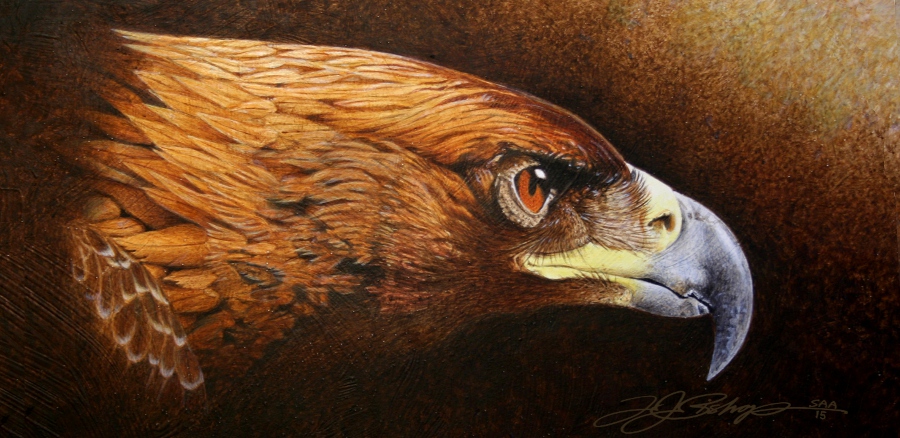Aquila chrysaetos – The Golden Eagle
ATTENTIONS BUYERS! THANK YOU FOR YOUR INTEREST...Due to supply chain complications, please call us at 602-999-3598 before completing sn order so we can verify availability of items.
ORIGINAL PAINTING
Size - 6 1/2 X 12 1/2
Canvas Giclee - Edition of 50, Signed & Numbered (Mounted on 1/4" MDF Board)
Size - 6 1/2 X 12 1/2
More Information
Aquila chrysaetos – The Golden Eagle is one of the best-known birds of prey in the Northern Hemisphere. It is the most widely distributed species of eagle. Like all eagles, it belongs to the family Accipitridae.
These large birds are dark brown, with lighter golden-brown plumage on their napes. Immature eagles of this species typically have white on the tail and often have white markings on the wings. Golden eagles use their agility and speed combined with powerful feet and massive, sharp talons to snatch up a variety of prey (mainly hares, rabbits, marmots and other ground squirrels).
Golden eagles maintain home ranges or territories that may be as large as 77 sq miles. They build large nests in high places (mainly cliffs) to which they may return for several breeding years. Most breeding activities take place in the spring; they are monogamous and may remain together for several years or possibly for life. Females lay up to four eggs, and then incubate them for six weeks. Typically, one or two young survive to fledge in about three months. These juvenile golden eagles usually attain full independence in the fall, after which they wander widely until establishing a territory for themselves in four to five years.
An eagle’s eye has approximately five times the number of light-receptor cells that we have—some 1,000,000 cones per square millimeter compared to our 200,000. Practically each receptor is connected to a neuron. As a result, the eagle’s optic nerve, which carries messages from the eye to the brain, contains double the number of fibers found in that of a human. Little wonder that these creatures have keen color perception! Finally, birds of prey, like other birds, have eyes equipped with a powerful lens that can change its focus quickly from objects an inch away [a few centimeters away] to those at a great distance. Their eyes far outmatch ours in this respect as well.










